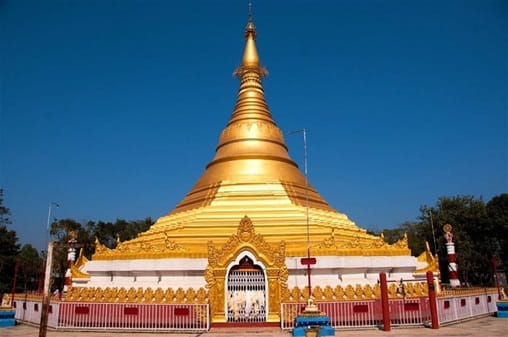
Lumbini, the birthplace of Lord Gautama Buddha | Tusk Travel

Power is not a simple concept as we may have thought, there are many types of power and there are many competing theories on power. A famous American political scientist, Joseph Nye, differentiates between two types of power, hard and soft power. Eventually, Nye introduces smart power as the ‘balance of hard and soft power’. According to him, ‘soft power’ is the ability to get ‘others to want the outcomes that you want’, and more particularly ‘the ability to achieve goals through attraction rather than coercion’. There are three measures of soft power: familiarity, reputation and influence. Culture, diplomacy, education, business/innovation, and government are the particles to understand the soft power of the countries. This article looks at the soft power of India and Nepal that shapes their relations.
India’s Soft Power in Nepal
India is the fourth most powerful country in Asia pursuing a regional leadership role in South Asia. The influential role it has nurtured over the decade can play as a game changer for the region. To match the footsteps with the changing world, India has used different bilateral and multilateral strategies to navigate the region towards a well-balanced future of prosperity and peace. In the 1990s, India supported peaceful advancement and a friendly policy towards its neighbours and the soft power to cater to India’s foreign policy to support its legitimacy in South Asia. India’s soft power has traditionally been characterised by diversity. India was appreciated as the ‘Golden Bird’ between 1 and 1000 AD for its GDP, which was also ahead of China at the time. This eventually brought migrants, brokers and raiders like ‘Alexander the Great’ to India. India’s soft power has spread in her extensive social and refinement inheritance over millennia; it demonstrates her purposes of secularism, liberalism and inclusiveness of cultures that are more perilous in today’s complex society.
After Prime Minister Narendra Modi came into power in 2014, India has invested substantial resources into building up its soft power. We can say India has been more innovative in using its soft power since then. Yoga, diaspora, medical tourism, Bollywood, education, space diplomacy, religion, tourism and Gorkha regiments are some major sources of India’s soft power in Nepal.
India has been pushing Yoga and Ayurveda as a major source of its soft power which has been quite successful. Nepal can reap benefits from this initiative all while further strengthening the relationship between the two. India has practised Yoga from the primordial eras, but after Indian Prime Minister Narendra Modi leads large congregations in yoga practice, Nepalese and the people around the world also started to practice it. Nepal has organised a series of such initiatives in the country.
India and Nepal share an open border, people from both sides can move easily, get married and settle down. Similarly, both the countries have a huge number of people who follow common religions – Hinduism and Buddhism. Thus, diaspora and religion are another most influential aspect of soft power. Moreover, religious tourism is the unsurpassed tool of soft power between India and Nepal because there are various commonalities in religion between the two countries.
Thousands of Nepali students go to India for higher education, especially in the field of medicine and engineering. About 3000 scholarships are provided to Nepali students every year by the Government of India for various courses at the PhD, Masters and Bachelors levels for study in India. Over the years, India’s input to the growth of human resources in Nepal has been one of the key aspects of India-Nepal collaboration.This will also mean Indian educational institutions springing up across Nepal will bolster the educational infrastructures of Nepal, also bolstering ties between the two states. Similarly, several go to India for better medical facilities at reputed hospitals. India has supported Nepal in many disasters and natural calamities by providing medical support equipment and medicine. Thus, health and education can be seen as another major source of India’s soft power in Nepal.
There is huge interest in Indian music, cinema and television serials in Nepal. There are many artists and professionals who visit each other's country and create a bond of friendship. So far, India has portrayed Nepali characters as often being submissive to the protagonists of the movies. A new movie, “Sam Bahadur” which is based on the life of Field Marshal Sam Manekshaw, is expected to show the sacrifices and contributions of the Gurkha soldiers from Nepal in various wars of India.
Nepal’s Soft Power in India
Nepal has already established itself as a benevolent state on the world stage which further strengthens its motive to identify and pursue soft power. Nepal is a country which finds ease in settling for soft power as opposed to power. Some of the most notable and recurring themes of soft power that Nepal possesses are tourism, Ayurveda, the Gurkha Regiment, Himalayas and Buddhism. Nepal’s Dog Festival (Kukur Tihar celebrated during Diwali) can also be developed as its soft power. Nepal is the birthplace of Lord Buddha which has been able to generate great goodwill for Nepal, not only in the country but around the world.
The recruitment of Gurkha soldiers into the regiments of the Indian Army is one of the major sources of soft power of Nepal for India. This soft power for Nepal transforms into hard power for India when they are recruited. The Gurkha Regiments are one of the foremost sources of revenue into Nepal and have also served as a long-standing intersection between the Indian Army and Nepal Army.
However, due to India’s newly introduced Agnipath recruitment policy, the future of the Gurkha recruitment tradition remains uncertain. It needs immediate attention of both the countries.
Conclusion
Nepal and India can leverage on their soft power to enhance their relations. At a time when China has been exerting influence in Nepal through their scholarship and educational engagement, India wants to counter them with its own initiatives by increasing scholarship quotas for Nepali students and increasing funding for Nepali educational institutions.
Bollywood is another source of India’s soft power which has the ability to draw narratives. It can be a powerful tool to build linkages among the people and at the same time can be a powerful tool that can shape Indian perception in Nepal. India should produce more Bollywood cinema that can portray the special relations that lie between the two countries. Filming in beautiful avenues of Nepal can also promote Nepali tourism, bringing the people of both the countries together.
Apart from adventure tourism which Nepal is famous for, religious tourism for Buddhists and Hindus can be a powerful tool for robust engagement. Both countries should work on developing the Buddhist and Hindu tourism circuit that will also generate huge economic gains. There are several religious places in India and Nepal where thousands of pilgrims from both the countries visit annually and hold great value, such as Pasupatinath, Muktinath and Janaki Mandir of Nepal and Haridwar, Banaras, Tirupati and others of India. Nepal, which is a home to a variety of herbs that has been used in the practice of Ayurveda for centuries, can also be an ideal location for hosting Yoga conventions and retreats. The recent historic achievement of India successfully landing Chandrayaan-3 has also earned India tremendous soft power. Thus, India’s aim to develop a satellite for SAARC member states for its neighbours is significant as it will enhance its soft power in the region.
(Exclusive to NatStrat)